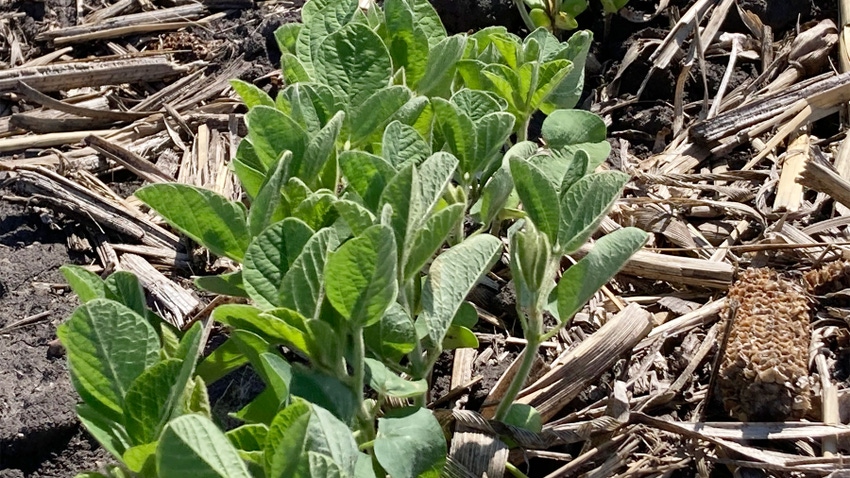January 23, 2024

Producers planning to use dicamba products this growing season need to be aware of state-specific restrictions for three dicamba herbicide products announced by the Minnesota Department of Agriculture. The restrictions are aimed at curbing off-site movement of the products.
The affected dicamba formulations are Engenia by BASF, Tavium by Syngenta and XtendiMax by Bayer. These are the only dicamba products labeled for use on dicamba-tolerant soybeans.
The three products will have the following restrictions in Minnesota in 2024:
Date cutoff. No application shall be made south of Interstate 94 after June 12. North of Interstate 94, use is prohibited after June 30.
Temperature cutoff. No application shall be made if the air temperature of the field at the time of application is over 85 degrees F, or if the National Weather Service’s forecast high temperature for the nearest available location for the day exceeds 85 degrees F.
“These restrictions have been effective over the past two growing seasons at decreasing complaints of off-target movement,” says Agriculture Commissioner Thom Petersen. “These products must be used without impacts on neighboring homes, farms and gardens. The Minnesota-specific restrictions are based on scientific evidence and have proven to be effective.”
Cases down
During the 2023 growing season, the MDA received 11 formal complaints and four responses to an informal survey, all alleging off-target movement. This is a major decrease from a peak in 2021, which saw a total of 304 formal complaints and survey responses. The MDA implemented the date and temperature restrictions in 2022, which resulted in 32 reports of alleged off-target movement.
There are also other federal requirements for the products that appear on the product labels. They include:
VRA. An approved pH-buffering agent, also known as a volatility reducing agent, must be tank-mixed with dicamba products prior to all applications.
Buffer. A downwind buffer of 240 feet, and 310 feet in areas where listed endangered species are located, is required. Visit the Environmental Protection Agency website to determine whether a 310-foot buffer is needed.
Record-keeping. Additional record-keeping items are required.
In addition to the cutoff dates, XtendiMax and Tavium have crop growth stage cutoffs.
Since dicamba was first registered for use on dicamba-tolerant soybeans in the 2017 growing season, the MDA has fielded complaints each year of alleged off-site movement onto neighboring property. The chemical is highly volatile and can damage nontarget plant species through spray drift and/or volatilization. Volatility is influenced by several factors, including temperature, relative humidity, rate of application and crop stage. The annual totals of complaints were:
2023, 15 reports
2022, 32 reports
2021, 304 reports
2020, 128 reports
2019, 20 reports
2018, 51 reports
2017, 249 reports
Engenia, Tavium and XtendiMax formulations of dicamba are approved for use on dicamba-tolerant soybeans only and are “restricted-use pesticides.” The dicamba products are only for retail sale to and for use by certified applicators.
Pesticide product registrations are renewed on an annual basis in Minnesota.
Source: Minnesota Department of Agriculture
You May Also Like




